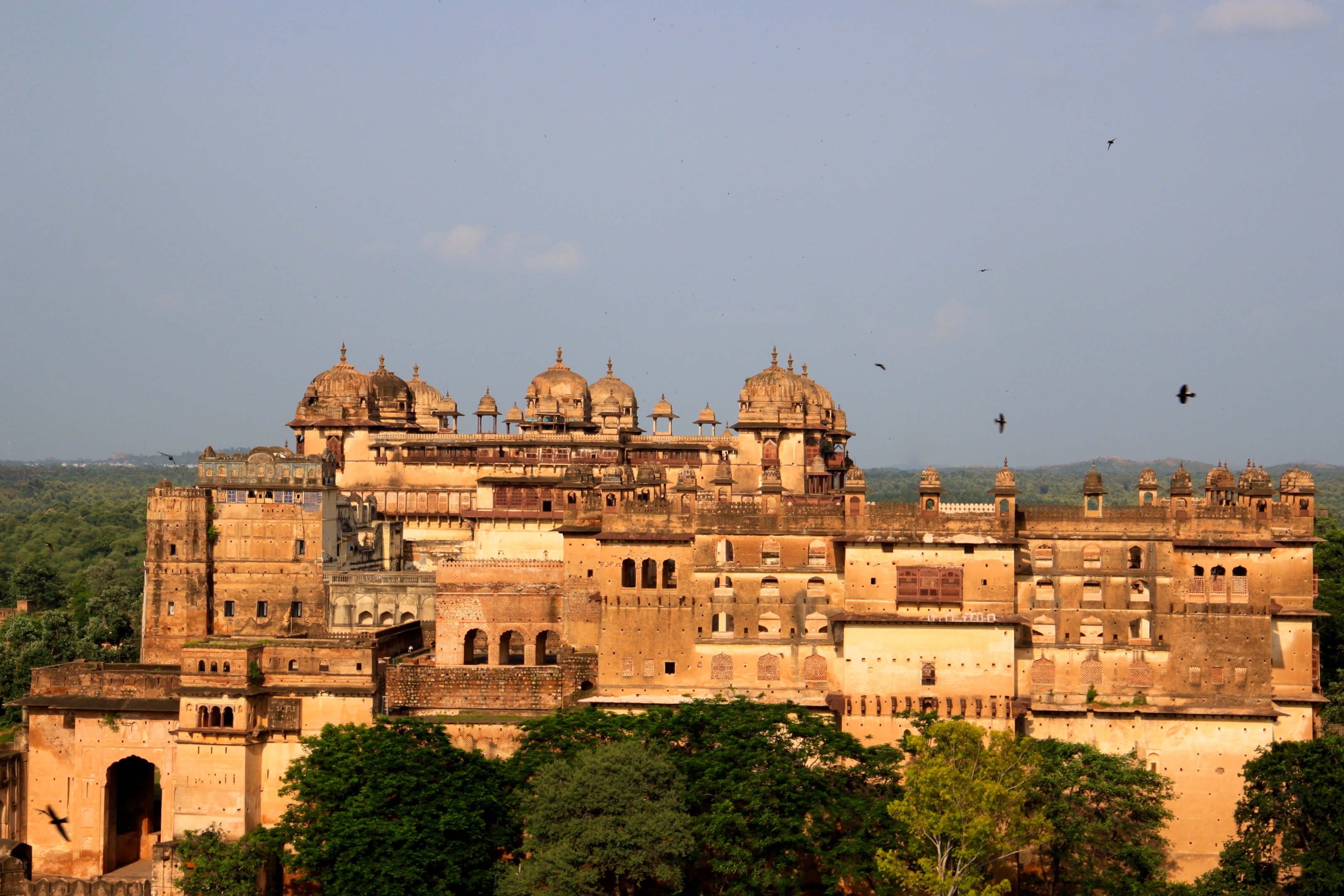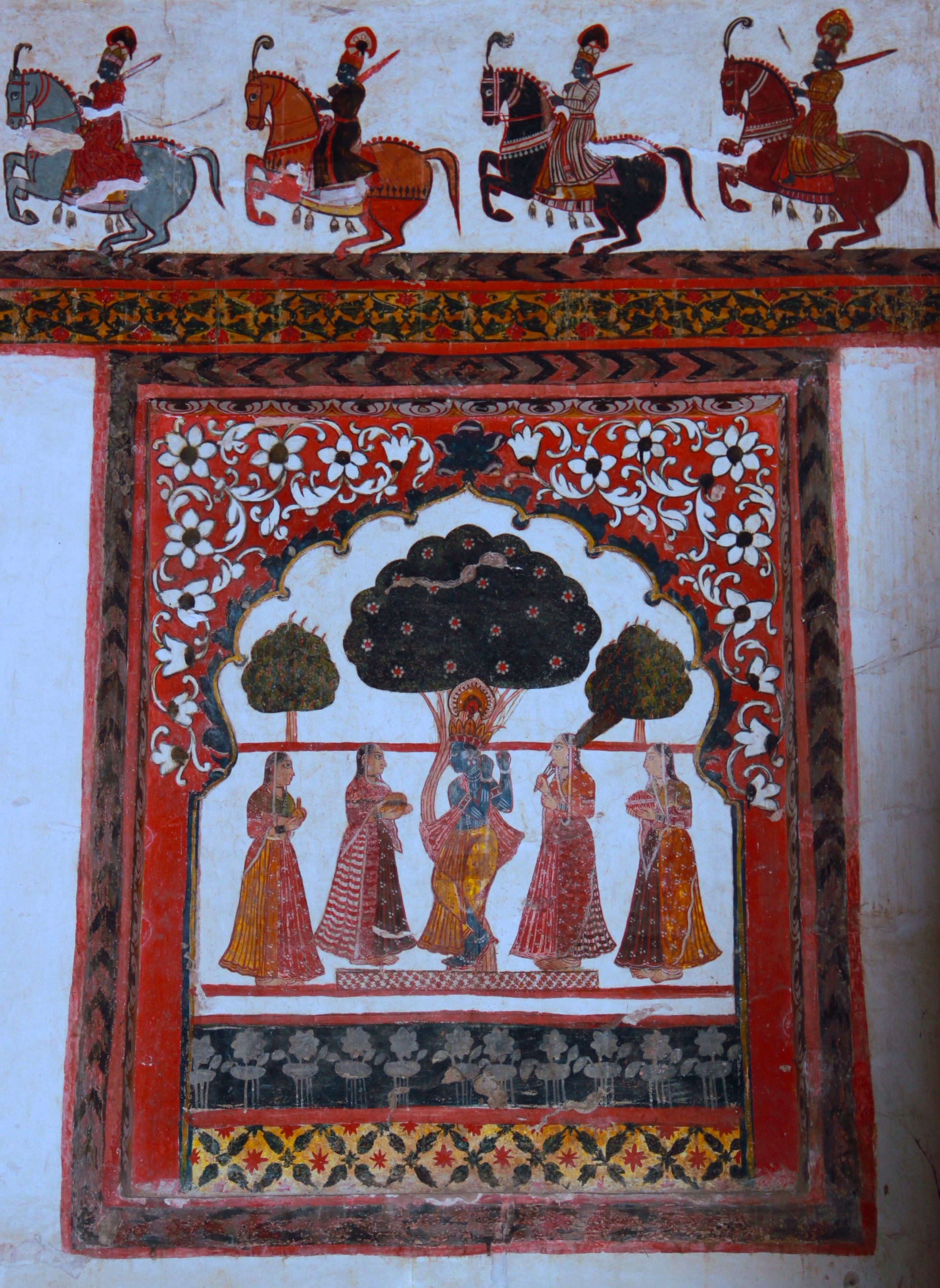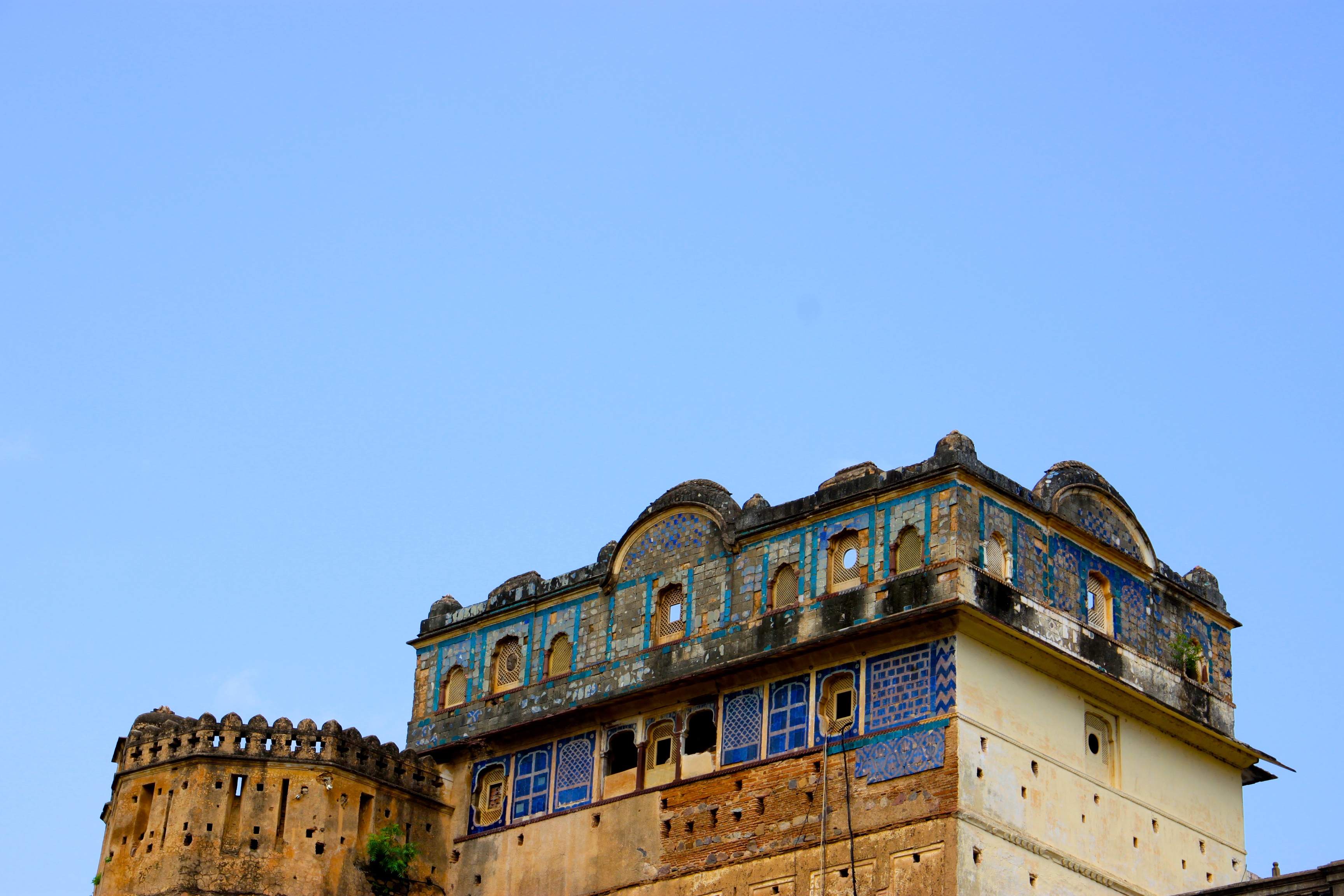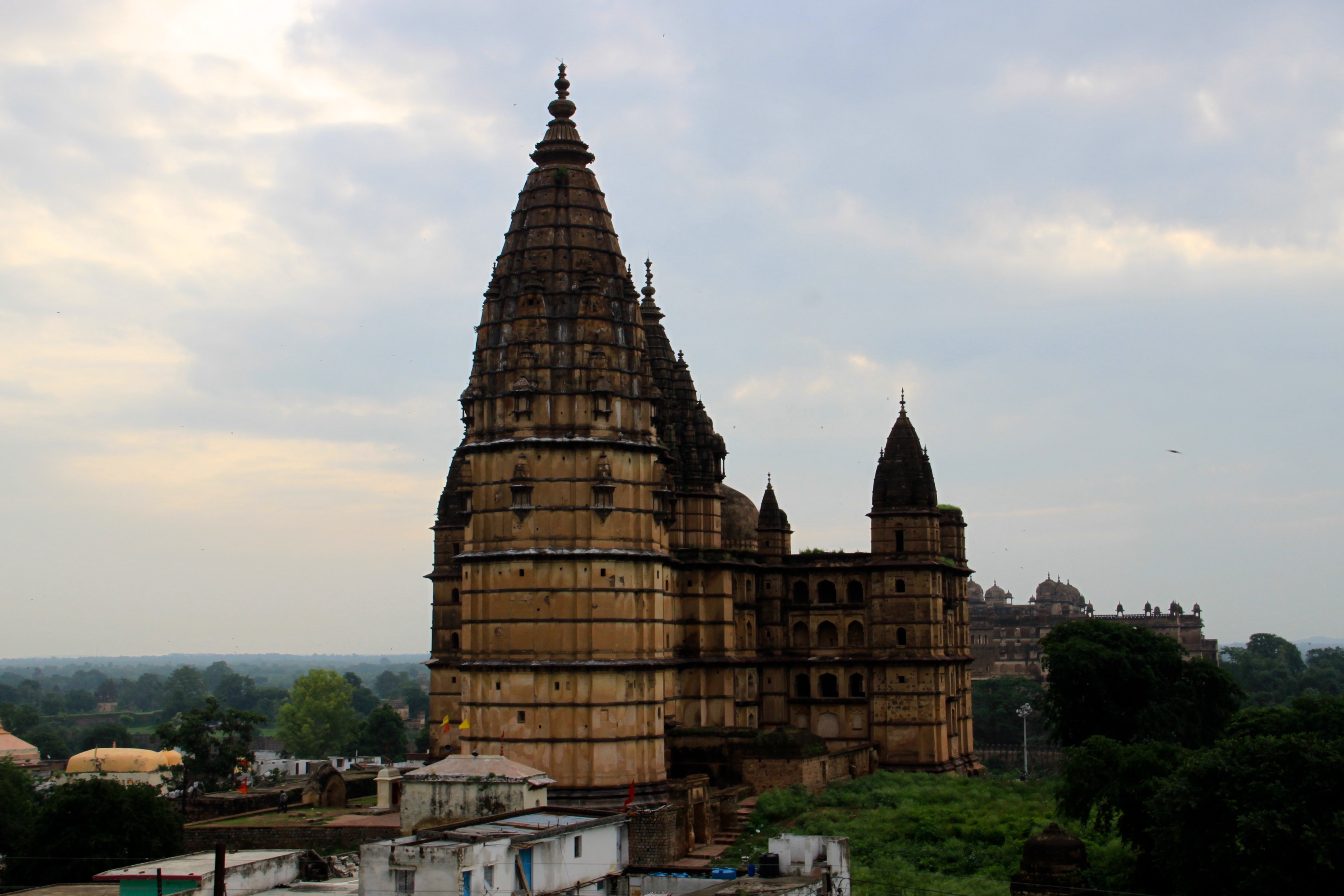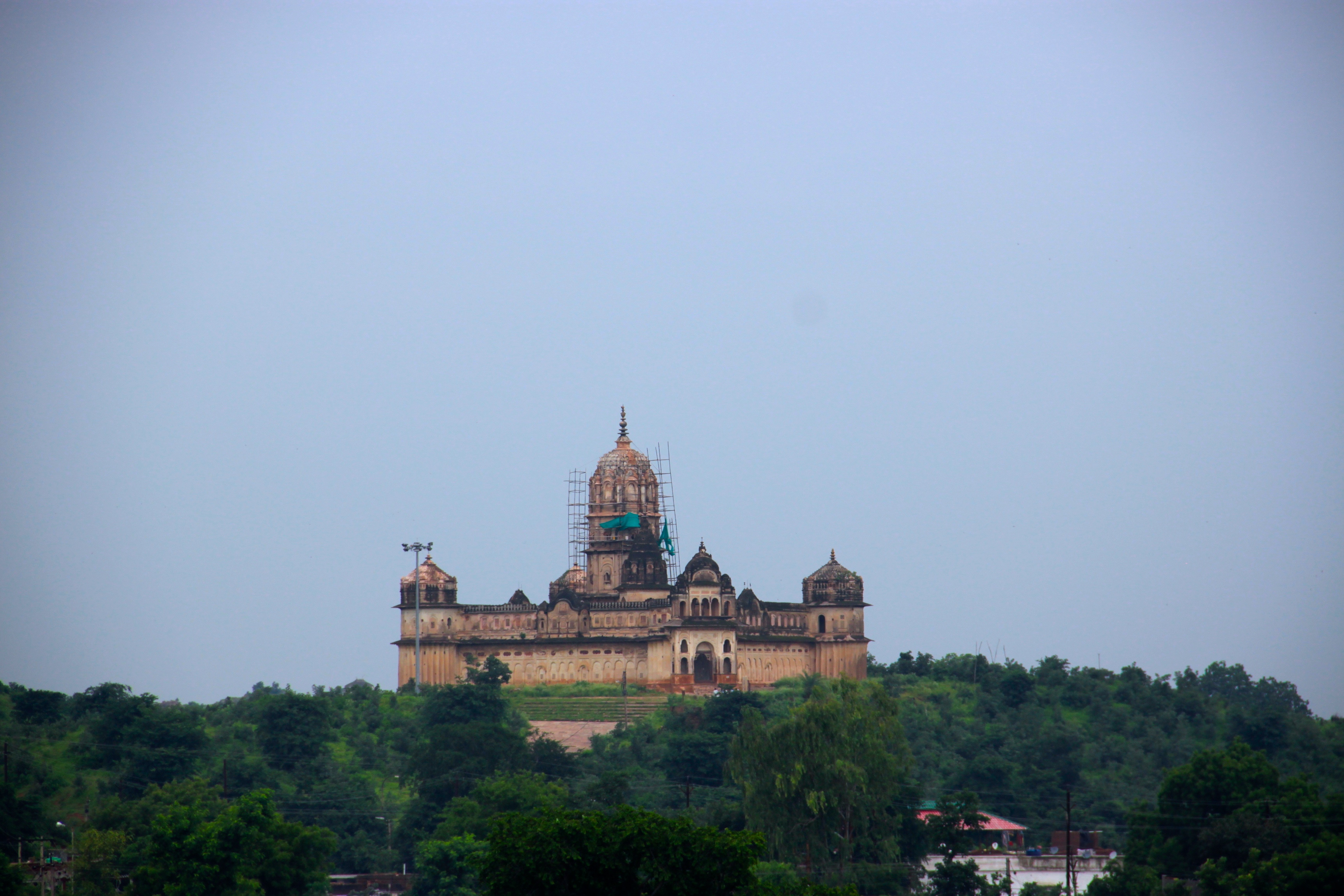Few days ago, Niels and I discovered the charm and the treasures of Orchhâ. This little town of the state of Madhya Pradesh, located at 10 kilometres south of Jhansi, is still preserved from mass tourism that we used to see in Agra or Jaipur. The beauty of its architecture and its tranquillity should convince you to spend a day there.
We traveled almost 500 kilometres by night train to reach Orchhâ. The trip in train between Delhi and Jhansi lasted about 8 hours. From Jhansi, it is really easy to reach Orchhâ by rickshaw for only 200rs.

Our arrival in this typical Indian town was striking. A crowd come to celebrate a religious fest occupied the centre village square. Lost in the middle of a human ocean, we attended to a musical battle between two Indian singers with castrato’s voices. Suddenly, a part of the crowd dropped the festivities and surrounded us. They wanted to make some selfies with us and offered their help. They showed us the ticket office which gives access to the seven main monuments for 250rs only (+ 25rs for a camera).
Our visit began with the Raj Mahal and the Jehangir Mahal. Those two massive monuments from 16th century erect strongly on an island in the middle of the river the Betwa. In the majestic courtyard of the Raj Mahal, we met a young Indian who decided to be our guide. Despite his young age, his knowledge of the site was remarkable. His showed us the palace from the catacombs to the rooftop, and include rooms with beautiful murals of Rama, Shiva or the royal family hunting and dancing.
Unfortunately, our new Indian friend did escort us to the Jehangir Mahal. This palace is at the height of the medieval Islamic architecture. Its rooftop gives a panoramic view of a green landscape. Some of its walls are still turquoise. To finish the visit of the island, we moved around the parc where we saw some vestiges of the past Orchhâ glory.
We left the island to join the Chaturbhuj Temple. The high towers of the temple eyed us from Palaces of the island. After having crossed the street of tourists shop we entered in the Temple. Once again an indian guy decided to guide us to the top of the Temple. The man was wearing a safran-orange toga and showed us the way through the giant stairs. Once arrived at the top we took our time to gaze upon palaces we had just left a few minutes ago. From the top of the templ we could see each of the medieval buildings of the country emerging of the green trees.
Willing to discover the small village of Orchhâ, we walked through the noisy streets of souvenirs sellers and fruit and vegetable peddlers, when a woman caught us, asking us what our name was. Before we could answer she gave us a coloured bracelet with bells, asking us to come back by her shop. In order to avoid a second time at her shop we took the way to the Lakshmi Temple through the residential district made of blue, white and red houses. After a few minutes walk we were at the Lakshmi Temple. This XIX century Temple surprised us by its triangular form. Sit down on an angle of the temple we enjoyed the sunset on Orchhâ.
The next day, after a generous breakfest, we visited the Ram Rajah Temple and used our last moments in Orchhâ to go through the traditional food shops. The more our train got closer of Delhi, the more we had the feeling to leave behind us a timeless city.


 Français
Français